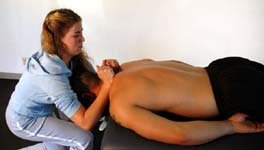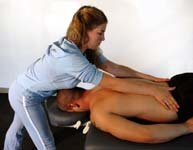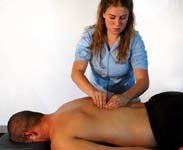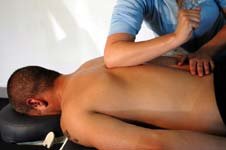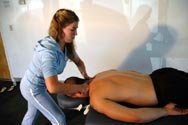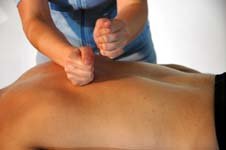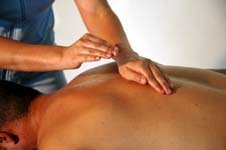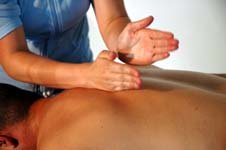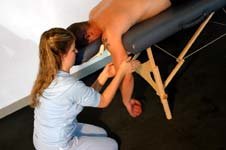History Of Swedish Massage
The history of Massage Therapy can be traced back over 5,000 years varying in many different types and applications. Chinese, Persian, and Egyptian cultures have all recorded the use of Massage Therapy for a variety of purposes including the improvement of circulatory and joint movement issues.
There are numerous types of massage, but perhaps the most popular and commonly known is Swedish Massage, which was first introduced as medical gymnastics in the 19th century by Swedish Psychologist Pehr Henrick Ling. He created a system of massage, using old techniques used by ancient Greeks and Romans to enhance many physical benefits.
Others believe that Dutch practitioner Johan Georg Mezger is the true developer of the techniques of Swedish Massage. He created the French names of the techniques incorporated within this type of massage.
Massage is generally assumed to be a lavish comfort that only the wealthy can afford. This idea has been changing throughout the course of history. Presently, Swedish massage is used not only to relax the human body, but to increase the overall health of the person receiving it.
Why Do I Need Massage Therapy?
There are numerous benefits to Swedish massage for all people and particularly athletes.
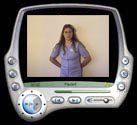 |
Video Introduction MPEG (4.2 MB) Windows Media (924 KB) |
Dilation Of Blood Vessels
Swedish massage helps to dilate the blood vessels, which improves circulation, which is necessary for flushing out toxins that exist throughout the body (lactic acid) that can cause problems such as swelling and muscle soreness.
It is not the actual massage that is increasing circulation, but it aids the body to initiate its own natural healing. It also increases the amount of red blood cells, protecting the body from anemia. For athletes, it is very important to keep the muscles healthy and in superior condition to increase performance.
Swedish massages assist in this process by improving muscle tone and helping to prevent fatigue and muscular atrophy which could result in injury. Injury is commonly caused by fatigued muscles that have become shortened (that is, tightened and strained). This type of massage has been known to actually lengthen the muscle, which reverses this problem. (APC CLASS NOTES)
Injury Prevention & Cleansing
Injury prevention is imperative for athletes. Massage helps the individual to be conscious of how their body functions and what restrictions it may have.
It is also very important for athletes to keep their body cleansed of impurities, thus Swedish acts as a mechanical cleanser, by stimulating lymph circulation and quickening waste and toxic elimination.
As we all know, when a muscle is pushed too hard without enough water, muscle spasms can occur. Massage works to relax muscle spasms and gives a relief of tension, while also provides natural recovery to the body.
After an intense workout, the body is depleted of essential amino acids, such as L-Glutamine. Massage can offset this depletion as well as boost the immune system. Athletes know that it is vital that they stay in optimal health so they can continue to train.
To become sick and have to stop training for even three days can be detrimental to an athlete and their workout regimen. This massage provides support for the individual, not just on a physical level but on a psychological level as well.
The massage helps to stimulate a chemical reaction in the body that reduces the opportunity for the body susceptibility to colds and slower recovery time.
Relief From Tension & Stress
One of the most popular reasons to schedule a massage is to relieve the amount of tension and stress that one may feel. This includes athletes! Training is difficult and requires an enormous amount of dedication and hard work.
The actual event that the athlete is participating in can push their stress level to the max which can actually lessen their performance. This is where massage comes in as a necessary tool.
By allowing the mind to relax and release inner tension, the body follows along. From my own personal experience, having a massage prior to an athletic event has not only made me feel less anxious, but it has also made me aware that I have an edge on the rest of my competitors.
Boost Performance
Pre-event massage helps to enhance performance, reduce tense muscles, augment flexibility and awareness, and also as injury prevention. (Salvo, 571) Massage can actually boost confidence levels because of a better outlook on body image, which is very important to all people but especially those who are faced with competition.
The body has the tendency to get so worked up from all the exercising and dieting that it can forget to relax, just as you forget to relax. Massage is beneficial for this reason because it allows the body to just chill out for a while and try to recover.
Benefits Of Swedish Massage
Circulatory System
- Increases circulation and lowers blood pressure
- Emphasizes the elimination of metabolic wastes. This is also effective because it lessens ischemia (reduction of blood supply to organs and/or tissues which affects muscular pain)
- Improves the lymphatic system which also removes waste from the body thus resulting in less swelling from injury
Endocrine System
- Releases endorphins
- Mechanically stretches and elongates muscles
- Stimulates parasympathetic nervous system
- Reduction in pain
- Helps improve weak muscles
- Supports relaxation and improves sleep
Muscular System
- Alleviates the restriction of muscles as well as tension and stiffness
- Enhances blood circulation
- Increases flexibility and durability of muscles
- Delivers more oxygen and nutrients to the muscles which reduces muscle fatigue and soreness.
Respiratory System
- Stimulates slower breathing
- Breaks up mucus and other respiratory discharge in the lungs.
- Allows the body to become relaxed and begin the repairing process
- If you're suffering from a cold, this is helpful because it helps you to rid your body of these toxins at a faster rate
Digestion/Elimination
- Can relieve colic and gas as well as constipation
- Promotes better digestion
Psychological
- Relaxes body and mind
- Improves all over well-being of the individual
- Relief of inner tension and stress (Salvo)
What Techniques Do You Need To Do?
The basic techniques of Swedish Massage consist of 5 different strokes that are very simple to learn. *Please note that only Certified and/or Licensed Massage Therapists should be practicing massage. This article is not intended as an instructional “how to”.*
 |
Basic Techniques MPEG (13 MB) Windows Media (2.7 MB) |
Effleurage
When applying Effleurage, the client is prone (face down) on the table. The therapist begins at the top of the neck and slowly glides down the back using the hands and forearms for deep pressure until reaching the base of the spine.
Using this on the limbs is effective for flushing the lymphatic system as well as assisting in blood flow. In my personal opinion, this is the technique that feels the best.
It helps the therapist to get a feel for which muscles are tense in the client's body. It also allows the client to begin to relax as they get used to the touch of the therapist.
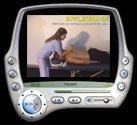 |
Effleurage MPEG (6 MB) Windows Media (1.3 MB) |
Petrissage
After the client has begun to relax, Petrissage is applied to further relax the client as well as warm up the muscles for deeper work. This technique consists of kneading, compression, rolling, and squeezing movements.
The therapist is lightly lifting the muscle upward from the bone with this process. With this technique, both the therapist and the client can get a feel for how deep the pressure needs to be. This stroke augments circulation and flush out toxins from the muscle and nerve tissue.
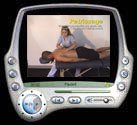 |
Petrissage MPEG (4.7 MB) Windows Media (1 MB) |
Friction
The most intense part of the massage is when friction is applied. This involves the deepest amount of pressure throughout the entire session. The therapist presses the palms, thumbs, fingertips, and elbows into the muscle tissue near bony areas such as along-side the spine. The circular motion of these strokes amplifies flexibility which assists in the healing process.
The goal in this technique is to break up hyper tonicities or "knots", which cause discomfort and limited range of motion. These hyper tonicities are the result of access toxins and muscle tension, which actually twist up your muscle tissue into a sore area.
They are caused by repetitious muscle movement, a fall or other accident, dehydration, as well as the stress of every day life. By using the elbow, the therapist has the greatest amount of pressure, and less stress on their own body.
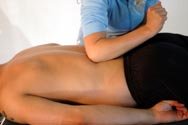
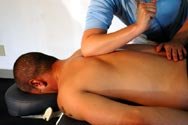
 Click To Enlarge.
Click To Enlarge. Use Of The Elbow Allows For Greater Pressure,
& Less Stress On The Therapist's Own Body.
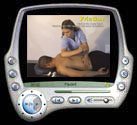 |
Friction MPEG (14.5 MB) Windows Media (3 MB) |
Trigger Points
- Hyper tonicities are caused Trigger point Therapy also falls under this category. Trigger points are small contained areas within the muscle that can be extremely tender and limited in motion.
These can develop due to a deficiency in essential vitamins (Vitamin B-6) or because of a stressful situation such as surgery or an accident. It is definitely painful when pressure is applied to these areas, but they can be quick to loosen up. By relieving the trigger points, the rest of the muscle is more relaxed.
The location of trigger points varies with each person and is dependent on what type of activity the individual is involved in. Typically, they are located in between the shoulder blades (trapezius and rhomboideus minor/major), as well as in the neck (levator scapulae)
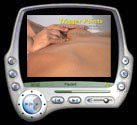 |
Trigger Points MPEG (6.1 MB) Windows Media (1.3 MB) |
Tapotement & Vibration
After the deeper work is done, lighter work to comfort the muscles is necessary. The last two techniques of a Swedish Massage consist of Tapotement and Vibration. These two techniques go hand-in-hand with one another.
Tapotement
- Tapotement is a series of percussive movements and involves the use of beating, slapping, and tapping the client to loosen up the muscle after deep work.
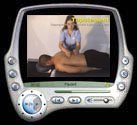 |
Tapotement MPEG (9.1 MB) Windows Media (1.9 MB) |
Vibration
- To further relax the client, vibration is necessary, as it helps to stimulate the blood flow one last time. The therapist places their hands firmly on the back of the client and shakes them slightly for a few moments. This can also be applied to just the arms, or just the legs.
After tapotement and vibration has been used, the client feels less groggy from the massage.
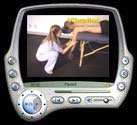 |
Vibration MPEG (3.7 MB) Windows Media (800 KB) |
Swedish Massage & Athletes
I would recommend a Swedish Massage for any athlete. There are many different types of massage; the differences vary in the application of the massage (pressure, technique) as well as the goals and limitations of the person receiving it.
In my own experience, I have worked on cyclists, runners, swimmers, as well as soccer, basketball, hockey and football players and even a horse jockey! The muscle groups differ with each athlete, but massage is important no matter the sport an individual is involved in.
After any type of massage, it is important to drink at least 3 glasses of water (approximately 24oz). This will facilitate the release of toxins and emphasize muscle flexibility.
A useful tip for post-massage is to stretch; this will enhance the benefits of the massage. Most importantly, relax and enjoy the massage!
How Do I Pick A Massage Therapist For Me?
Choosing a Massage Therapist is a very simple process, and is completely dependent on your individual needs and preferences. For instance, most people prefer to have a female therapist.
There are some men who feel uneasy with the idea of another man touching him and some women feel safer being half naked with a woman they don't know that well instead of a man. Again, this is your personal preference; both male and female massage therapists are fantastic in my own experience. Therapists can either be State Certified or Nationally Certified, either way they have undergone hours of clinical practice as well as academic study.
Another to consider would be the character of the therapist. For example, I prefer to have a Massage Therapist who is not holistic because Holistic Health can frequently interfere with my religious values.
Those who give massage can work at many different places including spas, resorts, or even Chiropractic offices, so you will need to decide what environment best suits you.
All that information is available in your local listings. The most important thing to remember when trying to find the right Massage Therapist for you is that it truly is all about you, so do that makes you comfortable and happy!
Benefits Of Massage For Athletes
 |
Benefits For Athletes MPEG (13 MB) Windows Media (2.7 MB) |
| Benefits Of Massage For Athletes | ||||||||||||
|
References:
- Salvo, Susan G. Massage Therapy: Principles & Practice. W.B. Saunders Company; Philadelphia, 1999.
- The Academy of Professional Careers Massage Therapy Program Class Notes.

